When it comes to mental health, silence can be deadly. Yet, many men feel pressured to “tough it out,” suppressing their struggles behind a mask of strength. Men’s Mental Health Month is a crucial campaign aimed at breaking this harmful cycle, creating open dialogues, and promoting support systems that encourage healing and resilience among men. Throughout this month, advocates and organizations worldwide work to shift outdated narratives, highlighting the truth: that seeking help is a sign of strength, not weakness.
Mental health issues don’t discriminate based on gender, but the ways they affect men—and how men often respond to them—demand specific attention. From emotional struggles to increased suicide rates, understanding and addressing men’s mental health is essential for building healthier individuals, families, and communities.
Let’s dive deeper into why this month matters and how we can all be part of the change.

Understanding Men’s Mental Health
Why Men’s Mental Health Deserves Special Attention
Mental health challenges impact millions globally, but when it comes to men, the discussion often remains muted. Society traditionally associates masculinity with stoicism, resilience, and emotional suppression. As a result, many men either ignore their mental health needs or feel ashamed to acknowledge them.
According to the National Institute of Mental Health, men are significantly less likely than women to seek mental health treatment, even though they suffer from depression, anxiety, and suicidal thoughts at alarming rates. In fact, men die by suicide almost four times more often than women.
This troubling reality makes it clear: Men’s mental health deserves focused attention—not because men are more important, but because the current system and culture fail them differently. The emotional cost of “man up” culture is staggering, not only hurting men but also their loved ones. It’s time to redefine what it means to be strong.
Common Mental Health Struggles Among Men
When men experience mental health issues, they often manifest differently compared to women. Instead of showing sadness or fear, men may display anger, irritability, or risky behavior. Some of the most common mental health issues affecting men include:
-
Depression: Often masked by workaholism, substance abuse, or anger.
-
Anxiety Disorders: Persistent worrying that may lead to irritability and difficulty concentrating.
-
Substance Use Disorders: Men are more likely than women to use (and misuse) almost all types of illicit drugs.
-
Post-Traumatic Stress Disorder (PTSD): Particularly common among veterans, survivors of violence, or those with childhood trauma.
Recognizing these patterns is crucial for early intervention and effective support.
Cultural and Societal Stigmas Affecting Men
Cultural norms deeply affect how men view and manage their mental health. Phrases like “boys don’t cry” and “be a man” are deeply ingrained in many societies. These messages discourage emotional vulnerability and encourage silence. As a result, men often delay or avoid seeking help altogether.
This stigma doesn’t just come from society at large—it’s often reinforced within families, peer groups, and workplaces. Men may fear losing respect, being perceived as weak, or facing discrimination if they admit to struggling.
Challenging these harmful norms is not just a job for men; it’s a collective effort. Educating children early, promoting emotional literacy, and supporting vulnerable conversations can change the tide for future generations.

The Importance of Men’s Mental Health Month
History Behind Men’s Mental Health Month
Men’s Mental Health Month officially finds roots in efforts to address the disproportionate impact of mental illness on men. It isn’t an internationally designated month like others but has gained traction in countries like the United States, the United Kingdom, Canada, and Australia.
June is often recognized as Men’s Health Month in general, and during this time, mental health takes a front seat alongside physical health discussions. Awareness campaigns, educational programs, and mental health screenings are promoted widely during this period.
The broader goal is to make sure men’s mental well-being becomes part of everyday conversation, not just a once-a-year focus. Recognizing historical neglect helps frame the importance of these initiatives today.
Goals and Mission of the Campaign
The mission behind Men’s Mental Health Month is straightforward but profound:
-
Raise Awareness: About the mental health challenges unique to men.
-
Break the Stigma: Encourage open conversations around mental health.
-
Promote Access to Resources: From counseling to crisis hotlines.
-
Empower Men: To prioritize their mental health without shame or judgment.
-
Support Community Efforts: Foster a culture of care, empathy, and resilience.
Through webinars, podcasts, social media campaigns, and local events, organizers aim to touch every layer of society, from individuals to institutions.
The Impact on Society and Future Generations
The importance of focusing on men’s mental health transcends individual well-being. When men feel supported and are mentally healthy, families become stronger, workplaces thrive, and communities flourish.
Moreover, when today’s boys see role models openly discussing mental health, they grow up with healthier emotional habits. By creating a society where emotional vulnerability is embraced, we plant seeds for a future where mental health conversations are normalized for everyone.
It’s about reshaping legacy—building a world where strength and sensitivity coexist.

Major Mental Health Issues Men Face
Depression and Anxiety in Men
Depression and anxiety are two of the most common mental health issues facing men, yet they often go unnoticed or untreated. Why? Because male depression doesn’t always look like sadness. Instead, it might appear as:
-
Chronic irritability
-
Substance abuse
-
Aggression
-
Workaholism
-
Reckless behavior
Many men may not even recognize they’re experiencing depression. Society has trained them to “push through” pain rather than address it. Anxiety, similarly, can manifest in physical symptoms like chronic headaches, gastrointestinal problems, or high blood pressure, often mistaken for purely physical ailments.
Without proper intervention, untreated depression and anxiety can lead to worsening symptoms, broken relationships, job loss, or suicide. Education, routine mental health checkups, and de-stigmatizing therapy are essential first steps in changing this trend.

Recognizing the Signs of Mental Health Struggles
Emotional and Behavioral Changes
Recognizing when a man is struggling mentally can be tricky, especially since many are adept at hiding it. However, certain emotional and behavioral signs should raise concern:
-
Withdrawal from friends, family, and activities
-
Increased anger, irritability, or aggressiveness
-
Lack of concentration or decision-making ability
-
Loss of interest in hobbies and passions
-
Decreased performance at work
Sometimes these behaviors are brushed off as “normal” male behavior or stress responses, but they often point to deeper issues that need addressing.
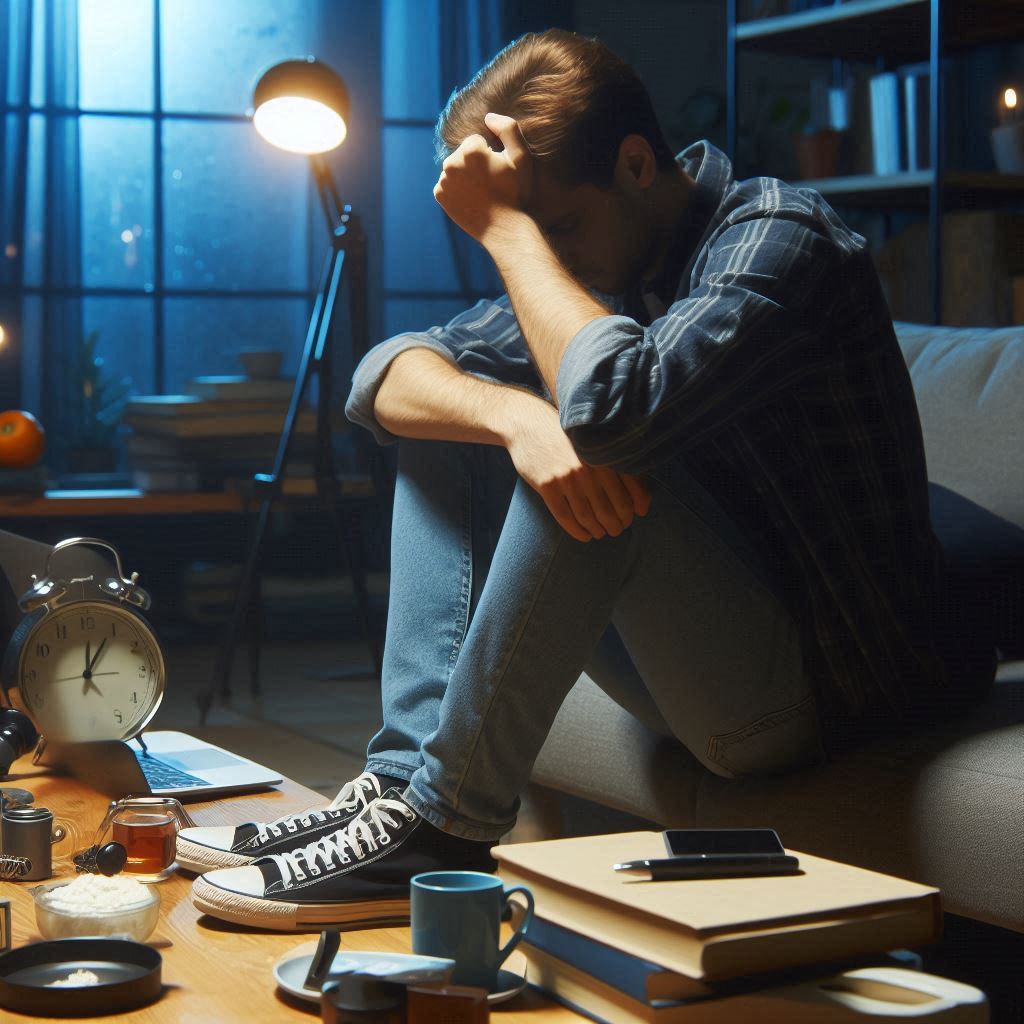
How to Support Men’s Mental Health
Creating Open and Safe Spaces
Supporting men’s mental health starts with one simple yet powerful concept: creating a space where they feel safe to open up. This doesn’t mean forcing conversations or pushing for vulnerability on demand—it means building trust, showing empathy, and removing the judgment from emotional expression.
Many men have internalized the idea that they must “deal with it alone.” This mindset makes it hard for them to even recognize safe spaces, let alone use them. Whether it’s at home, at work, or in a friend circle, creating emotionally inclusive environments can encourage healthier dialogues.
A few ways to promote safe spaces include:
-
Active Listening: Sometimes men just need to vent. Listen without interrupting or immediately offering solutions.
-
Sharing Your Own Struggles: Vulnerability is contagious. When you open up, it invites others to do the same.
-
Avoiding Dismissive Language: Phrases like “get over it” or “man up” reinforce the toxic norm that emotions are weaknesses.
When men feel they won’t be shamed or dismissed, they’re more likely to seek the support they need.
The Power of Peer Support and Mentorship
Peer support has emerged as one of the most effective tools in mental health advocacy for men. Why? Because hearing from someone who’s been through similar experiences breaks down barriers and builds a sense of camaraderie.
Men often relate better to other men who understand their unique pressures—whether that’s navigating fatherhood, handling workplace stress, or coping with loss. Support groups and mentorship programs designed by and for men provide judgment-free spaces where they can share, grow, and heal.
Some community-driven initiatives like “Men’s Sheds” in Australia or peer circles in local churches or clubs have shown tremendous success. Online platforms and social media groups also serve as modern spaces for connection, especially for those who struggle with face-to-face interaction.
Professional Therapy and Treatment Options
Despite the stigma, therapy is gaining traction among men—and that’s a great thing. But the type of therapy and the therapist’s approach matter. Many men respond better to action-oriented strategies, structured programs, or therapists who understand male socialization.
Popular therapeutic approaches for men include:
-
Cognitive Behavioral Therapy (CBT): Helps identify and change negative thought patterns.
-
Group Therapy: Encourages shared healing experiences.
-
Solution-Focused Therapy: Great for goal-oriented men who want tangible progress.
Encouraging men to view therapy not as a last resort but as a proactive form of self-care is key. With better education and more male-focused therapeutic spaces, we can reduce the resistance that still exists today.

Strategies for Men to Maintain Good Mental Health
Building Healthy Relationships
Healthy relationships can act as a buffer against mental health challenges, offering emotional support, belonging, and love. But for many men, relationship-building skills aren’t naturally encouraged during upbringing. Emotional literacy, vulnerability, and active communication are often overlooked in favor of toughness or independence.
To build and maintain strong relationships—whether romantic, platonic, or familial—men need to:
-
Express feelings openly and honestly
-
Practice empathy and deep listening
-
Address conflicts without aggression or avoidance
-
Seek mutual respect and support
Being emotionally available doesn’t mean being weak; it means being human. And that humanity is what strengthens bonds.
Exercise, Nutrition, and Sleep
Physical and mental health are tightly interwoven, especially for men who may find it easier to prioritize their body over their mind. But here’s the good news: taking care of one improves the other.
-
Exercise: Regular physical activity reduces stress hormones and boosts mood-enhancing chemicals like endorphins.
-
Nutrition: Eating balanced meals rich in omega-3s, fiber, and protein supports cognitive function and emotional regulation.
-
Sleep: Chronic sleep deprivation can lead to irritability, anxiety, and depressive symptoms.
By framing these habits as part of a “performance optimization” mindset, men may be more likely to embrace them—not as a cure-all, but as pillars of total well-being.
Stress Management Techniques
Men often deal with high-pressure environments—at work, at home, or in society. Chronic stress is a silent destroyer of mental health, but effective management techniques can help.
Here are a few that work well:
-
Mindfulness and Meditation: Reduces rumination and promotes present-moment awareness.
-
Breathing Exercises: Quick and accessible stress relief anywhere, anytime.
-
Time Management: Prevents overwhelm by creating structure and balance.
-
Hobbies and Downtime: Having “non-productive” time is essential for mental recharge.
Encouraging men to explore different coping methods allows them to discover what works best, leading to more consistent mental health practices.
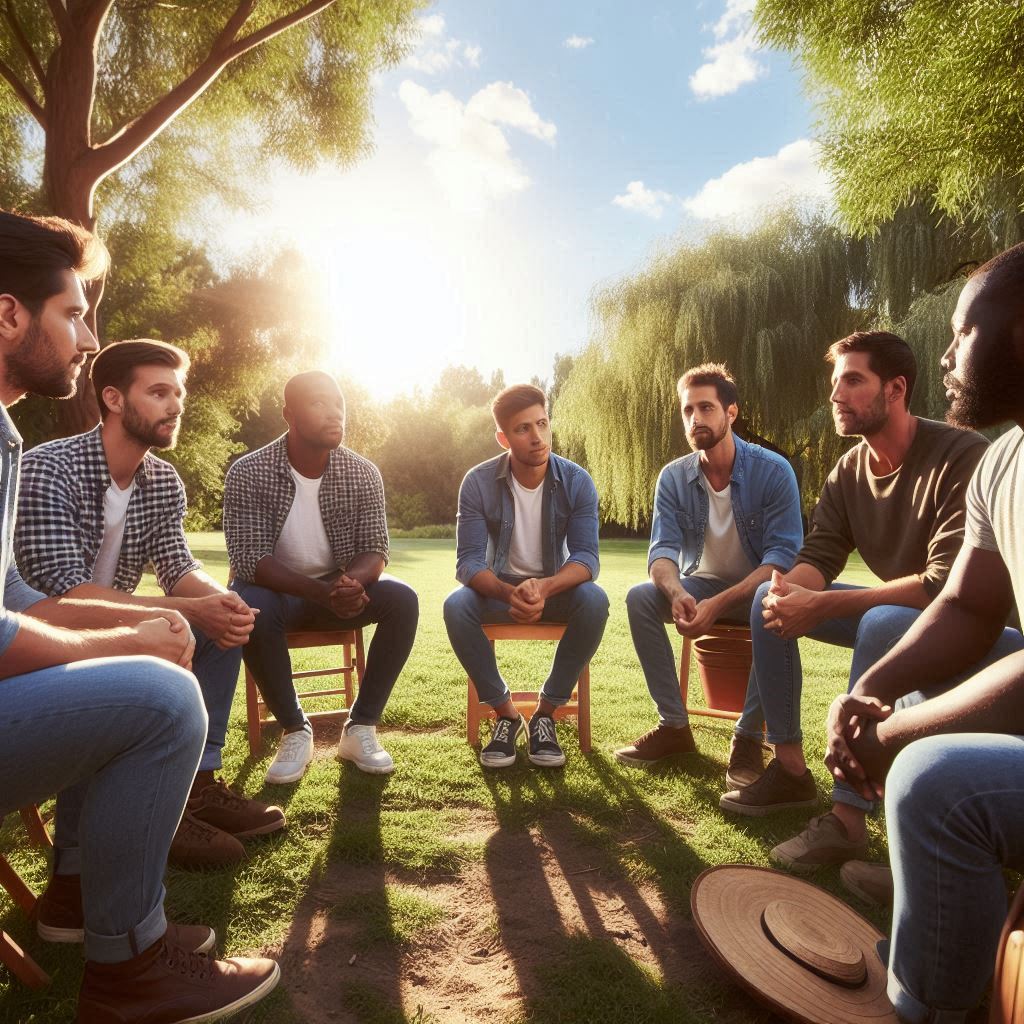
Role of Employers and Workplaces
Encouraging Mental Health Days and Policies
Work stress is a leading cause of burnout and depression in men. The traditional “grind culture” often discourages rest, pushing employees to ignore mental strain. But as companies evolve, so too must their understanding of what health means—including mental health.
Mental health days are a powerful tool in combating burnout. Employers can encourage their use by:
-
Normalizing time off for mental wellness
-
Removing the stigma of taking such days
-
Building them into the benefits package
Companies that care for employee mental health experience lower turnover, higher morale, and increased productivity—a win for everyone.
Building a Mental Health-Friendly Work Culture
A workplace culture that supports mental well-being isn’t built overnight. It requires consistent messaging, leadership involvement, and open-door policies that encourage conversation.
Key components of a mental health-friendly work culture include:
-
Mental health training for managers
-
Regular mental wellness workshops
-
Anonymous feedback systems
-
Flexible working arrangements
When leadership models vulnerability and prioritizes wellness, it sets a powerful tone from the top down.
Providing Resources and Training
Awareness isn’t enough—men need access to tools that allow them to take action. That means employers must go beyond posters in the break room and invest in tangible support systems:
-
Employee Assistance Programs (EAPs)
-
Access to licensed counselors or coaches
-
Online mental health platforms like BetterHelp or Headspace
-
Mandatory training on identifying signs of mental distress
Providing the right resources helps dismantle the idea that seeking help is inconvenient or inaccessible. It’s an investment in your people, and by extension, your company’s success.
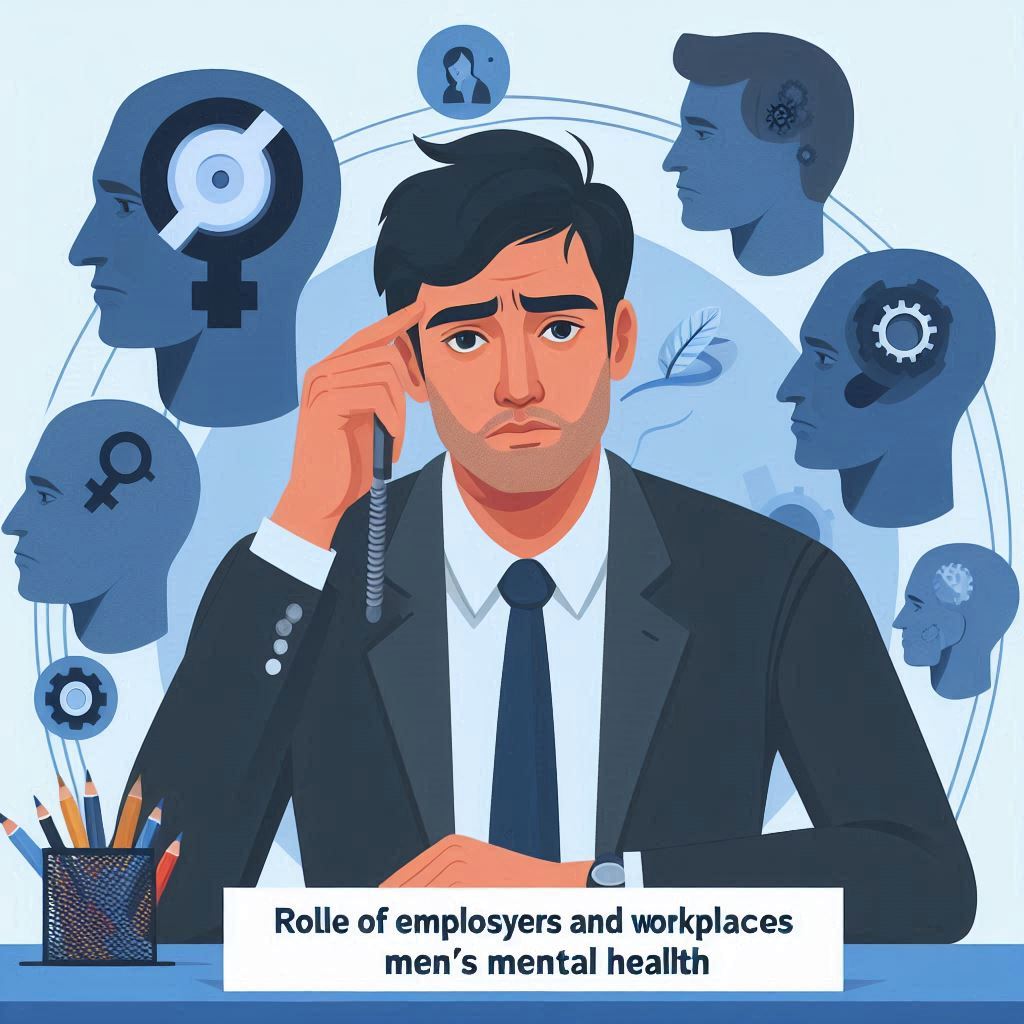
Breaking the Stigma: Changing the Conversation
Powerful Campaigns and Public Figures Leading the Way
When influential voices speak up, the world listens. Public figures like Dwayne “The Rock” Johnson, Prince Harry, and NFL star Brandon Marshall have all shared their battles with mental health—shattering stereotypes and empowering millions of men to speak out.
Campaigns like:
-
Movember
-
#MensHealthWeek
-
Heads Up (UK football mental health initiative)
…are making mental health awareness trendy, relatable, and visible. These initiatives don’t just create noise—they build communities.
How Media Representation Matters
Representation shapes perception. When media only showcases stoic, emotionless male characters, it reinforces the myth that men don’t or shouldn’t struggle emotionally.
But shows like Ted Lasso or films like The Pursuit of Happyness prove otherwise—highlighting vulnerability as a strength. Whether it’s through advertising, entertainment, or news outlets, changing the way men are portrayed is vital for dismantling deep-rooted stigma.
Teaching Boys About Mental Health Early On
The earlier boys learn that it’s okay to cry, to share, to ask for help—the better. Emotional education should start in childhood, not adulthood. Schools, parents, and communities can instill this by:
-
Including mental health in school curricula
-
Promoting emotional expression at home
-
Encouraging non-toxic role models
If we want the next generation to thrive mentally, we need to equip them now—not later.

Resources and Organizations Supporting Men’s Mental Health
National and International Organizations
Thankfully, the rise in awareness around men’s mental health has led to the growth of dedicated organizations working tirelessly to support men in need. These organizations offer resources ranging from education and advocacy to counseling and community engagement.
Some notable examples include:
-
Movember Foundation: Known globally for its mustache campaign in November, Movember funds programs aimed at suicide prevention, mental health support, and early intervention.
-
HeadsUpGuys (Canada): Aimed specifically at men, this initiative offers self-check tools, guidance, and resources to support men’s mental wellness.
-
Man Therapy (USA): Combines humor and psychology to reach men with messages that resonate, encouraging them to seek help.
-
CALM (Campaign Against Living Miserably, UK): Offers support to men at risk of suicide through hotlines, content, and awareness campaigns.
These organizations help fill a gap in a healthcare system that often overlooks the emotional complexities men face. Their collective goal: to make help more accessible and appealing.
Online Communities and Support Groups
Not every man feels comfortable walking into a therapist’s office, especially at the beginning of their journey. That’s where online communities become a powerful gateway. Forums, private Facebook groups, Reddit communities like r/MensLib, and anonymous chat platforms are offering judgment-free zones for connection and healing.
These spaces are valuable because they:
-
Allow anonymity, which reduces fear of stigma.
-
Connect men globally, offering diverse perspectives.
-
Provide peer-to-peer guidance in real-time.
Virtual support groups also accommodate men with busy schedules or limited access to mental health professionals. They act as a bridge to more formal treatment.
Hotlines and Emergency Help Resources
Crisis moments can hit hard and fast, and having immediate access to help can save lives. Men experiencing mental health crises should be aware of the emergency services designed to intervene.
Here are a few lifelines:
-
National Suicide Prevention Lifeline (USA): 988
-
Samaritans (UK): 116 123
-
Lifeline (Australia): 13 11 14
-
Crisis Text Line (Global): Text HOME to 741741
Encouraging men to store these numbers in their phones, or post them somewhere visible, is a small but impactful action that can make all the difference.
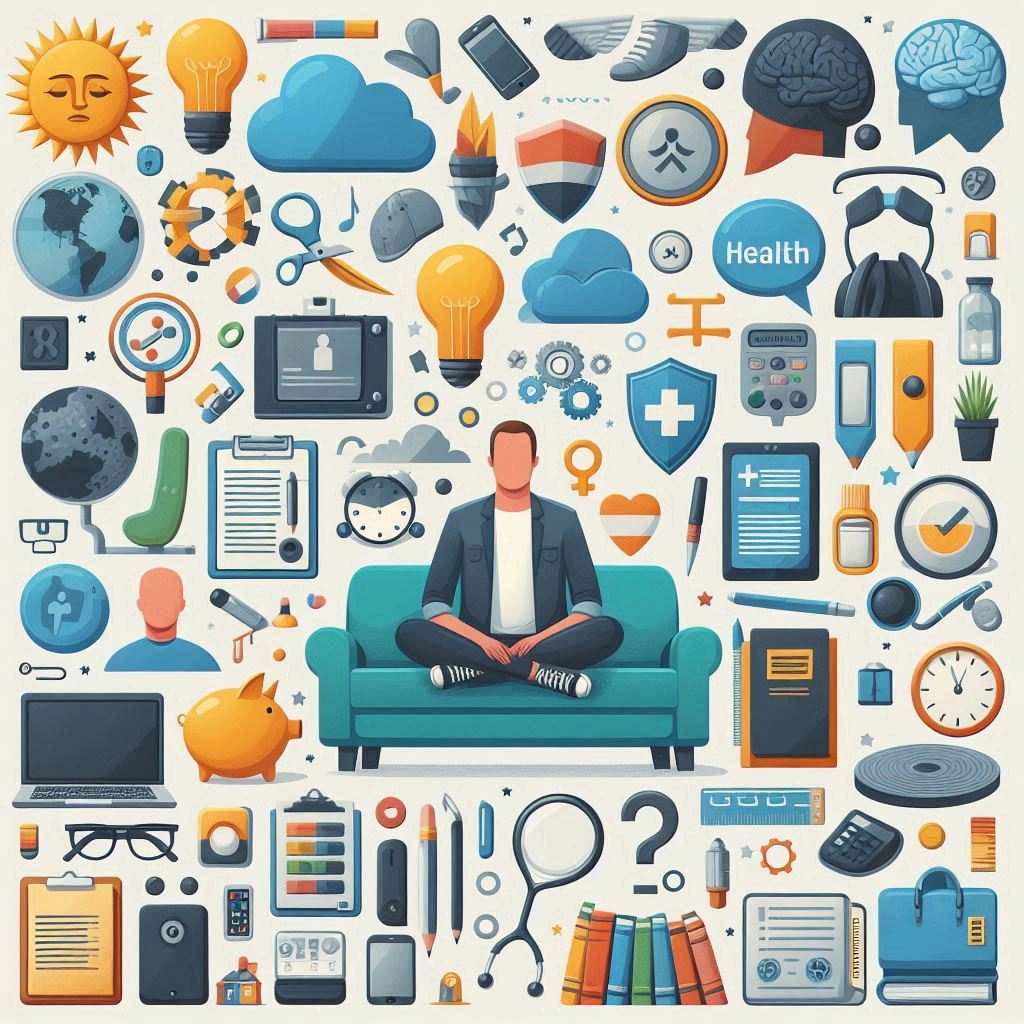
Personal Stories: Voices of Courage and Hope
Real-Life Testimonies from Men
There’s a unique kind of healing that comes from hearing someone say, “I’ve been there too.” Real-life stories of men who have battled and overcome mental health struggles breathe life into statistics and remind others they’re not alone.
Whether it’s a father juggling work stress and depression, a veteran dealing with PTSD, or a college student confronting anxiety—each story is a testament to resilience. These stories, often shared through blogs, podcasts, or YouTube channels, humanize the experience of mental health recovery.
Some platforms that amplify these voices include:
-
The Mighty
-
Humans of New York
-
BetterHelp’s testimonial series
The more stories we share, the more we chip away at shame.
How Sharing Stories Reduces Isolation
One of the most damaging effects of mental illness is the feeling of isolation. When men believe they’re the only ones feeling a certain way, it becomes harder to ask for help.
Sharing stories:
-
Normalizes emotional struggles.
-
Builds empathy across different experiences.
-
Encourages others to seek help sooner.
Even just reading a story that mirrors your own can make a person feel less alone. Storytelling creates a ripple effect that goes far beyond the individual.
Lessons and Inspiration
From struggle comes wisdom—and many men who’ve walked the road of mental health challenges emerge with profound insights. These lessons don’t just help others; they redefine what masculinity can look like.
Some key takeaways shared by survivors include:
-
“Therapy saved my life.”
-
“It’s okay to not be okay.”
-
“You’re stronger when you ask for help.”
By sharing these truths, we reshape outdated views of what it means to be a man, replacing isolation with community and fear with hope.
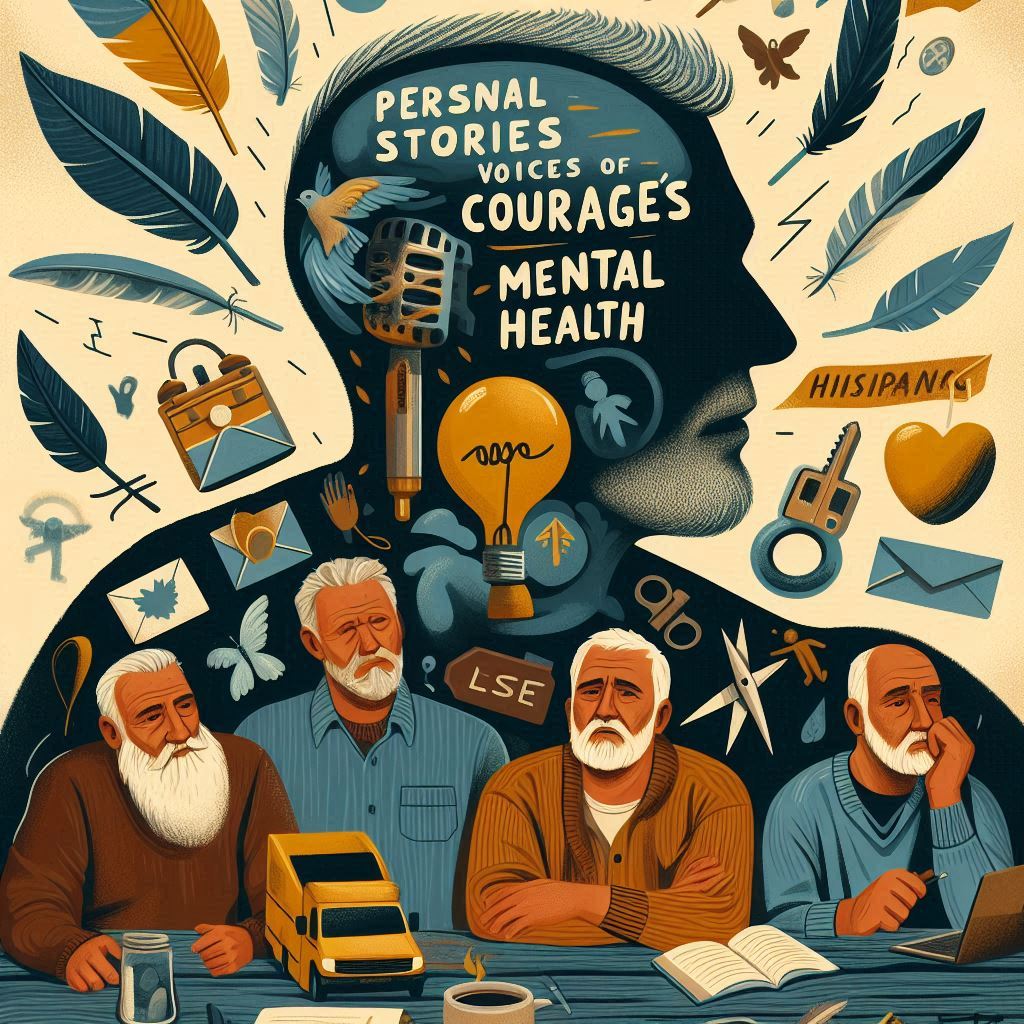
The Future of Men’s Mental Health Advocacy
Trends to Watch
The landscape of mental health is evolving fast, and men’s advocacy is no exception. Emerging trends are shaping a more inclusive, informed, and proactive future.
Watch for:
-
Mental health tech: Apps like Calm, Talkspace, and Headspace are customizing experiences for men.
-
AI-driven therapy tools: AI chatbots and digital wellness trackers are becoming more popular.
-
Cultural inclusivity: Tailoring mental health approaches to different ethnic, socioeconomic, and LGBTQ+ backgrounds.
These advancements are making mental health support more dynamic and accessible than ever.
Innovations in Mental Health Support
We’re entering a new age of mental wellness, with innovation playing a huge role. Virtual reality therapy, wearable stress monitors, and teletherapy are just the beginning.
-
Virtual reality (VR) can help veterans relive and reframe traumatic events in a controlled setting.
-
Telehealth platforms now allow men in rural or remote areas to connect with licensed therapists.
-
Wearable devices are now tracking heart rate variability and stress levels, alerting users when intervention is needed.
These tools aren’t replacements for human connection—but they’re powerful supplements.
Building a More Compassionate World
Ultimately, the future of men’s mental health lies in building a culture of compassion. One where boys are taught it’s okay to feel, men are supported through challenges, and communities rally around wellness as a shared goal.
By combining technology, storytelling, policy, and human connection, we can create a world where mental health is just health—no stigma, no shame, no silence.
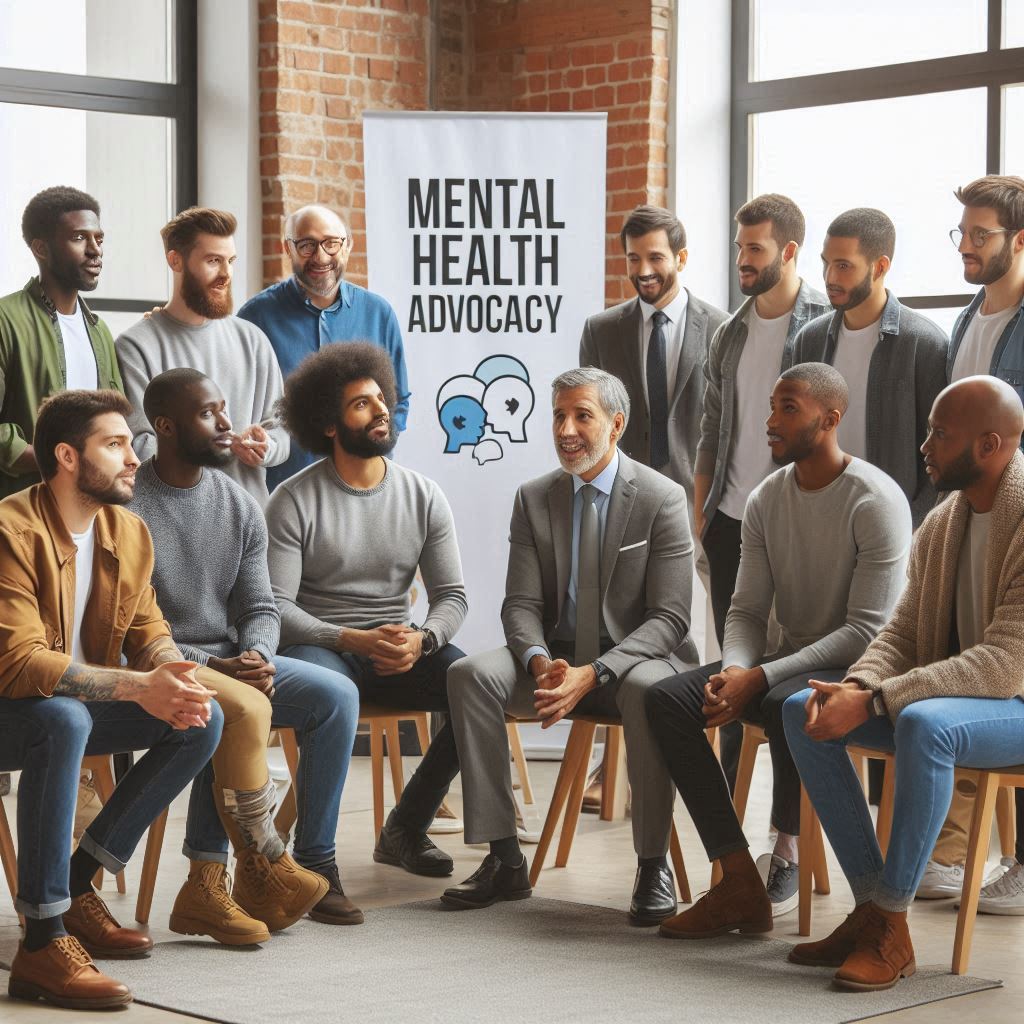
Conclusion: United for Men’s Mental Health
Men’s Mental Health Month is more than a date on the calendar—it’s a call to action. A reminder that strength lies in openness, and that healing begins with honesty.
Whether you’re a man facing mental health struggles, a friend offering support, or an employer building a healthier culture, your role matters. Every conversation, every resource shared, and every stigma challenged brings us closer to a world where men no longer suffer in silence.
Let’s keep the momentum going—not just this month, but every day. Because when men thrive mentally, everyone benefits.
FAQs
Why do men find it hard to talk about mental health?
Cultural norms often equate masculinity with emotional suppression, making many men fear being seen as weak or unmanly if they open up. This conditioning starts in childhood and is reinforced by media and social environments.
What are the early signs of depression in men?
Common signs include irritability, anger, fatigue, sleep issues, withdrawal from social interaction, and changes in appetite or sexual drive. Men may also resort to substance abuse or overworking to cope.
How can family and friends support men’s mental health?
Encourage open dialogue, practice active listening, avoid judgmental responses, and gently suggest professional help when needed. Creating a safe space can make a world of difference.
Are there specific therapies designed for men?
Yes, many therapists use approaches like cognitive-behavioral therapy (CBT), solution-focused therapy, or even group therapy tailored for men’s needs and communication styles.
How can workplaces promote men’s mental health?
Workplaces can introduce mental health days, provide access to resources, train leaders to recognize signs of distress, and create a culture where emotional wellness is prioritized.
Our Sources
-
Movember Foundation
A global initiative focusing on men’s mental health, suicide prevention, prostate cancer, and testicular cancer.
Website: https://us.movember.com/about/mental-health -
HeadsUpGuys
A Canadian-based resource offering practical tips, self-check tools, and therapist directories specifically for men dealing with depression.
Website: https://headsupguys.org/ -
Man Therapy
An innovative platform using humor and evidence-based strategies to address men’s mental health issues and reduce stigma.
Website: https://mantherapy.org/ -
Campaign Against Living Miserably (CALM)
A UK-based charity dedicated to suicide prevention and promoting mental well-being among men.
Website: https://www.thecalmzone.net/ -
Verywell Mind Article: “Why Men Don’t Get Mental Health Help When They Need It”
An insightful article exploring societal norms and barriers preventing men from seeking mental health support.
Article: https://www.verywellmind.com/exploring-the-stigma-of-men-and-mental-health-5510053 -
Self Article: “3 Things to Do If You’re a Guy Who Has No Idea How to Start Therapy”
Provides strategic advice for men hesitant about initiating therapy.
Article: https://www.self.com/story/three-things-therapy-men
Read other articles on HappiLife


hi
Great article on Women’s Fashion! It’s always inspiring to see how fashion evolves and empowers women. The tips and trends mentioned are very practical and easy to follow. I especially loved the section on sustainable fashion choices. What are some other ways to incorporate sustainability into everyday fashion?